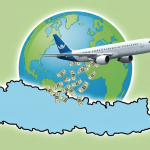
This year, farmers from Gorkha district earned over NPR 110 million by selling litchis, according to the Agriculture Knowledge Center Gorkha. The increase in production compared to last year has resulted in higher earnings.
Chief of the center, Prakash Bastakoti, reported that litchi production increased by 7.5% this year compared to last year.
“Favorable weather conditions and proper orchard management led to a good litchi harvest this year,” Bastakoti stated. Commercial litchi farming is mainly practiced in Palungtar Municipality–6 Gaikhur, Ward No. 7 of Chyangli, and Ward No. 8 of Dhuwakot. He also mentioned that most farmers have already completed their litchi sales for this season.
“Last year, litchis were cultivated on 153 hectares, producing 1,597 metric tons,” he said. “This year, the cultivated area increased to 159 hectares, yielding 1,716 metric tons of litchis.” The litchis were sold at an average price of NPR 65 per kilogram. Farmers earned between NPR 3,000 to NPR 7,000 per tree from litchi sales.
Farmers have expressed satisfaction with their income this season. Narayan Aryal, a farmer from Dhuwakot in Palungtar–8, earned NPR 200,000 from litchi sales this year. Aryal, who has been engaged in commercial litchi farming for over two decades, stated that this year’s harvest was particularly good.
“Litchi trees need both water and dry spells to thrive. Fortunately, the weather was favorable this year, and there was no damage from hailstorms,” he explained. “The fruits were juicy and of high quality. All farmers are very happy with this year’s harvest.”
Aryal shared that farmers in the area began planting litchis about three decades ago in fields previously used for millet and maize. “Litchi farming is far more profitable than millet or maize. Once we realized its potential, many farmers switched to growing litchis,” he added.
Aryal owns an orchard with 250 litchi trees. He mentioned that traders often approach farmers early in the season to lease the orchards, eliminating worries about selling the produce. “Most farmers lease out their orchards around February,” he said. This year, litchis were sold for prices ranging from NPR 65 to NPR 100 per kilogram, depending on quality.
Thanks to their proximity to the Prithvi Highway, farmers in the area do not face difficulties in selling their produce. The litchis from this region are mainly supplied to markets in Kathmandu, Pokhara, Damauli, and Dumre.
Farmers with even just five to seven trees reported earning at least NPR 20,000 during the harvest season. Given the high returns with minimal investment and labor, litchi farming is becoming increasingly attractive among local farmers.
Litchi farming in this region began as an experiment in 1973 (2030 BS). After successful results, many farmers adopted litchi cultivation commercially. Now, nurseries have been established in every ward to supply litchi saplings.











